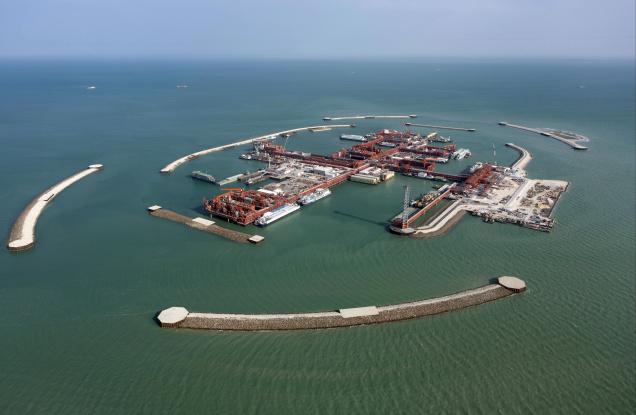
Kazakhstani President Tokayev Embarks on a Turbulent Second Year in Office
Publication: Eurasia Daily Monitor Volume: 17 Issue: 42
By:

On March 19, 2019, Nursultan Nazarbayev resigned as president of Kazakhstan and was constitutionally succeeded the following day by the speaker of the Senate, Kassym-Zhomart Tokayev. Less than three months later, on June 9, the president ad interim was confirmed in his role through a popular election. The new head of state was quickly faced with unprecedented street protests that began during the election campaign and which the government blamed on exiled former banker–turned–opposition–activist Mukhtar Ablyazov. Now that Tokayev’s presidency has entered its second year, the ruling regime is facing a much bigger crisis. The double hit of low oil prices and the ongoing coronavirus pandemic, which has shut down a significant chunk of global commerce, arguably poses the highest threat to domestic stability that Kazakhstan has ever faced, even in comparison with the turbulent 1990s (see EDM, June 12, 2019, March 27, 2019, March 24, 2020).
A year since Nazarbayev’s stepping down, on March 6, 2020, Russia and Saudi Arabia’s four-year OPEC+ deal on oil production limitations collapsed. In 2016, the Saudi-led Organization of the Petroleum Exporting Countries (OPEC), Russia and a group of smaller exporters had collectively agreed to remove 1.2 million barrels of crude per day (bpd) off the market, effective January 2017. The cut was increased to 1.7 million bpd in December 2019. Amid falling demand caused by the novel coronavirus pandemic, Riyadh had conceived a plan to almost double the cut to 3.2 million bpd, but Moscow turned it down. With OPEC+ unraveling to the surprise of many, the price of Brent crude tumbled in mid-March to below $27 per barrel for the first time since 2003. Given the Saudi decision to unleash an all-out price war in retribution for Russia’s intransigence, it is likely that the price of Brent will trail its 2017–2019 $63/barrel average for a long time, at least until 2021 (RBC, March 6, 12; Vedomosti, March 18).
In keeping with tradition, Kazakhstan had gone along with Russia in vetoing OPEC’s proposal to step up the output cuts. However, Energy Minister Nurlan Nogayev later said that the collective deal “had been in everybody’s interest” and acknowledged that the OPEC+ collapse had taken Kazakhstani authorities by surprise. Kazakhstan maintains high sensitivity to the oil price curve because it still depends on crude exports for approximately a quarter of its gross domestic product (GDP) and some 60 percent of government revenue. The national currency, the tenge, which has been in free float since August 2015, weakened from around 382 per dollar at the beginning of the year to a record low of almost 450 per dollar today (Tengrinews.kz, March 11; RIA Novosti, March 10; Zakon.kz, March 6).
After 4.5 percent nominal growth in 2019, Kazakhstan’s GDP was, until recently, expected to expand by a further 4.1 percent in 2020, according to a three-year official spending plan until 2023. But on March 10, National Economy Minister Ruslan Dalenov admitted that the macroeconomic forecast would need to be revised downward. The current budget, which for 2020 projected a deficit of 2.4 percent, was predicated on an average price of oil equal to $55/barrel. The last time Brent traded at that level was the end of February 2020; it has halved since then. Although Dalenov refused to discuss alternative scenarios, he said that economic growth might slow down to 2 percent and the budget deficit could rise to 3 percent. In neighboring Russia, Fitch Ratings recently downgraded its 2020 GDP growth forecast from 2 to 1 percent while the Russian government expects a 0.8 percent surplus to give way to a 1 percent deficit (Kommersant, March 19; Kapital.kz, March 10; Inbusiness.kz, February 28).
Not only was Kazakhstan absent from the crucial conversation between Saudi Arabia and Russia that ultimately caused the collapse of their oil alliance, but it is also worse prepared than Russia for a prolonged economic shock. Since the 2008–2009 financial crisis, real disposable income has taken consecutive hits in 2009, 2014 and again 2015 as a result of overnight devaluations. Since right before the last devaluation dated August 2015, the tenge has lost more than 58 percent of its value vis-à-vis the dollar. Diminished purchasing power stems from the inevitability of price hikes for imported goods—from cars and electronics to clothes and foods. Reduced oil revenue means lower public spending, with material implications for a wide range of companies that either depend on government subsidies or work extensively with the sprawling public sector. The Kazakhstani banking sector remains structurally fragile as well and will see its asset quality deteriorate as the crisis sets in (Xe.com, March 25; Liter.kz, March 3).
The oil shock is being compounded by the coronavirus COVID-19 outbreak, which the World Health Organization declared a pandemic on March 11. On March 15, President Tokayev declared a state of national emergency. Both the former and current capitals, Almaty and Nur-Sultan (named Astana until last year), have been in lockdown since March 19. The government is allocating a record $9.8 billion as part of a massive anti-crisis package to help businesses and workers ride out the slowdown if not outright shutdowns in some industries. While this figure is impressive in absolute terms (Kazakhstan’s 2019 GDP amounted to a total of $178.2 billion), it is less than what the government spent on rescuing the banking sector from knock-on defaults in 2017–2019. Unemployment benefits the Tokayev administration is planning to extend to as many as 1.5 million people are a meager 42,500 tenge ($95) per person and their availability is contingent on an active social security account. All this suggests that Tokayev’s second year in office will be far more difficult than his first one (Liter.kz, Inform.kz, March 23; Zakon.kz, March 19).



